Ig Nobel: Sometimes Nobel-Worthy
Or: Why Stinky Cheese Helps
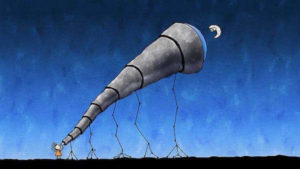 Some science results in vital, society-altering work. Think about our creating vaccines, researching earthquakes, and discovering new construction materials.
Some science results in vital, society-altering work. Think about our creating vaccines, researching earthquakes, and discovering new construction materials.
Other science makes valuable contributions to our understanding of the universe around us—theoretical physics or marine biology, for example—and these very often produce society-altering work.
Then, of course, there is the science that doesn't quite have the same sort of impact, like magnetically levitating a frog or creating a chemical recipe to partially unboil an egg.
The Ig Nobel Prize is given out each September, around the time of the real Nobel prizes. It's broadcast every year on the Friday after Thanksgiving on NPR's program “Science Friday,” which makes for a much better use of my time than hunting Black Friday deals.
The awards either criticize (awarding a prize in “science education” to the Kansas State Board of Education for their stance on teaching evolution in schools) or to gently rib scientists for absurd research (testing the “five second rule” for eating food off the ground, which they proved to be false).
A few of my favorites:Discovering that the word “huh” or an equivalent seems to exist in every language.
 Realizing that if you attach a weighted stick to the rear end of a chicken, it then walks in the same way that dinosaurs were thought to have walked.
Realizing that if you attach a weighted stick to the rear end of a chicken, it then walks in the same way that dinosaurs were thought to have walked.- Measuring the friction between a banana skin and a shoe, and a banana skin and the floor, when we step on the banana.
- Investigating whether cat ownership is mentally hazardous (I could have answered that).
- Testing how reindeer react to seeing humans disguised as polar bears.
- Finding that some people could run on water, if that water were in the Moon's gravity instead of Earth's.
- Discovering the biochemical process by which onions make people cry.
- Figuring out that leaning to the left makes the Eiffel Tower seem smaller.
- Calculating the balance of physical forces inside a human ponytail
- Discovering a way to extract vanillin (the active component of vanilla) from cow dung.
All of my favorites are in the real-but-absurd science category: the awards given out to people doing homeopathy or predicting the end of the world are grin-worthy…but not all that interesting.
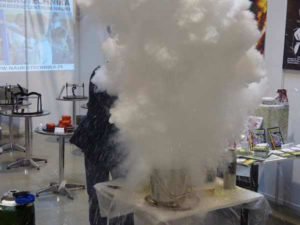 The absurd science category sometimes becomes relevant: Sir Andre Geim won both the Ig Nobel Prize (he was the one to levitate the small frog with magnets) and the Nobel Prize for his work on graphene.
The absurd science category sometimes becomes relevant: Sir Andre Geim won both the Ig Nobel Prize (he was the one to levitate the small frog with magnets) and the Nobel Prize for his work on graphene.
And the Ig Nobel award-winning study showing that malaria mosquitoes are attracted to Limburger cheese has been used to create large-scale mosquito traps in strategic locations in Africa.
Mostly, though, I just find that the real science is funnier.
_________
Quotable
Yes, Yard Ramp Guy—I remain blog relevant. You?
“The most exciting phrase to hear in science, the one that heralds new discoveries, is not ‘Eureka!’ (I found it!) but ‘That's funny…’"
— Isaac Asimov
The World is Still Round
But Kansas is Still Flatter Than a Pancake
Quick quiz: When did humanity discover that the Earth is round?
 If you answered Copernicus or Galileo, you're off by a millennia or two. The Ancient Greeks actually discovered this.
If you answered Copernicus or Galileo, you're off by a millennia or two. The Ancient Greeks actually discovered this.
To prove the theory, they created an experiment using two dry wells, hundreds of miles apart. Then, at noon on the same day, the Greeks measured the shadows at the bottom of the well to see if they were at the same angle. When they weren't, they used the difference in angle to figure out the actual size of the Earth…with remarkable accuracy.
(Trigonometry is important, kids. If you don't believe me, just ask Jeff over at The Yard Ramp Guy.)
Okay, another quick quiz: When did humanity forget that the world was round?
I bet the most specific thing you can think of is the Dark Ages or the Fall of Rome, right? Well, both are incorrect: We never forgot. To quote the brilliant Stephen Jay Gould, "There never was a period of 'flat Earth darkness' among scholars (regardless of how the public at large may have conceptualized our planet both then and now). Greek knowledge of sphericity never faded, and all major medieval scholars accepted the Earth's roundness as an established fact of cosmology."
 In fact, we can trace the popularization of the idea that people thought the Earth was flat back to specific historians in the 1800s.
In fact, we can trace the popularization of the idea that people thought the Earth was flat back to specific historians in the 1800s.
Sadly, this is pretty common stuff when we think about history. People are swift to assume that their distant ancestors (or at least other people's distant ancestors) were dumber than people today.
It really doesn't take that much effort to realize that idea is wrong, but most people won't even try to put in the effort.
(Really don't believe me? Then let's see you design an aqueduct with pen and paper.)
_________
Quotable
Oh, Yard Ramp Guy: what goes around comes around:
"’I'll follow him to the ends of the earth,' she sobbed. Yes, darling. But the earth doesn't have any ends. Columbus fixed that."
— Tom Robbins, Still Life with Woodpecker
Surrounded by Skeuomorphs
Fun with Tchotchke Design
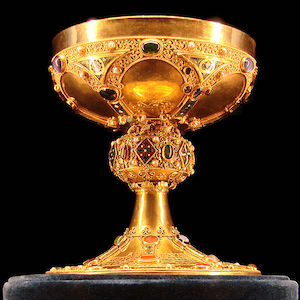 Why do some molded plastic objects have molded plastic screw heads in them?
Why do some molded plastic objects have molded plastic screw heads in them?
They're not real screws, and they serve no purpose in holding the object together. As it turns out, that's not just an aesthetic choice but something more.
They're called skeuomorphs—“derivative objects that retain ornamental design cues from structures that were necessary in the original.” These are things like fake woodgrain on a station wagon, a volume control panel on a computer that looks like an old school sound system with dials and knobs, or plastic chairs imitating wooden ones.
Ancient Greek stone architecture had small features called triglyphs and guttae that didn't serve any purpose in stone, yet had important roles when the ancient Greeks primarily worked in wood. (They were the carved ends of beams along with the pegs craftsmen used to secure them.) Also, potters mimicked expensive silver goblets using pottery and often inlaid clay pellets to resemble the rivets in the metal ones.
Though skeuomorphism has obvious applications in design, architecture, and art history, we’re seeing extensive use in the digital realms. Digital skeuomorphs are actually a fairly important design element: when you can make the user interface resemble whatever you want, it can be helpful in giving the user a point of reference.
 The most prevalent digital skeuomorph is probably the shutter-click that camera phones and digital cameras make when you take a photo. In film cameras, the sound was caused by a physical function. In digital devices, the sound exists solely to let you know the photo was taken in digital ones.
The most prevalent digital skeuomorph is probably the shutter-click that camera phones and digital cameras make when you take a photo. In film cameras, the sound was caused by a physical function. In digital devices, the sound exists solely to let you know the photo was taken in digital ones.
Of course, not everyone supports the use of skeuomorphs in this way. Apple, for instance, has begun moving away from them entirely in favor of a more simplified, streamlined design style.
Personally, I'd rather be surrounded by skeuomorphs. I think they're charming. They can really make objects seem classy and not ostentatious. I have been accused—and rather fairly—of being resistant to change…once or twice, though. Maybe more. Not counting Maggie saying it several times a week. Or all the times my doctor's said it.
I can adjust to change if I really want to. I usually just don't want to.
_________
Quotable
Oh, Yard Ramp Guy: be the change you wish to see in, er, your yard ramps:
“Yesterday I was clever, so I wanted to change the world. Today I am wise, so I am changing myself.”
— Rumi
Playing with Pareidolia
Or: Why Is That Cloud Eating Grass?
Everyone plays the game as kids—the one where you look for objects in clouds, right? Even the least-imaginative kids could at least see sheep. Well, it turns out there's a name for it, and it's actually pretty important.
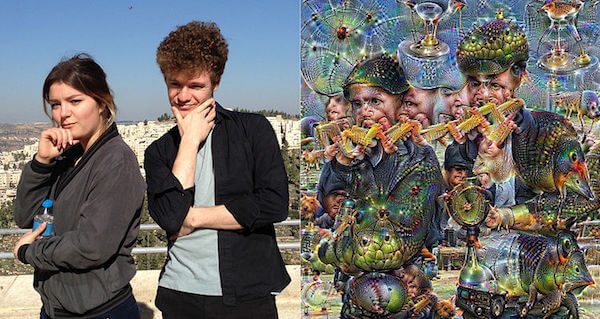
It's called pareidolia. Broadly speaking, this is the brain's ability to perceive a familiar pattern in a stimulus where none actually exists. Other examples: mountainsides that resemble faces and trees that look like people.
People aren't the only entities that experience pareidolia. Computers do it, too. Google has a program called DeepDream that specifically sets out to exploit this, and it produces some really, really weird results. (DeepDream especially sees a lot of dogs.)
Pareidolia is fairly important in science, and it causes a lot of problems in archeology and paleontology. Amateurs are constantly picking up rocks they mistakenly think are arrowheads, dinosaur eggs, or bones. This happens so much that there's a specific name for rocks like this: mimetoliths. This also includes larger rocks, like the mountainsides that look like faces.
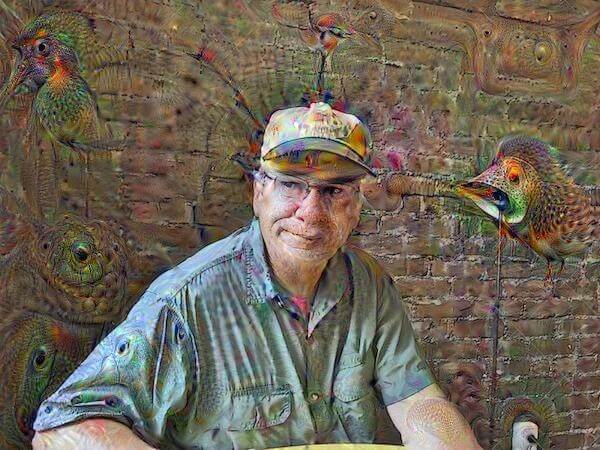
Yeah, well.
The most famous applied use of pareidolia is the Rorschach inkblot test, which is supposed to give insight into a person's mental state. A fairly successful tool, we’ve used the Rorschach continually since the early 20th century—fairly astonishing, since psychology has thrown away so much from that time period.
If you're familiar with the tabloid-fodder “Jesus appears on toast” articles, you've stumbled on another example of pareidolia.
It also sees extensive use in art, which is unsurprising. Many optical illusions (like the famous one that could either be a lamp or two faces) are good examples. Leonardo da Vinci wrote about pareidolia as a tool in art. Pareidolia is one of the main reasons cartoons work so well, making it easy for us to assign complex emotions to simple line drawings of people.
Pareidolia isn't good or bad—just reflects an aspect of how our brains interpret the world—but can also lead you astray. This phenomenon is also probably one of the coolest oddities involved in discovering how our brains work.
_________
Quotable
Oh, Yard Ramp Guy: are we seeing the same things differently?
“There are things known and there are things unknown, and in between are the doors of perception.”
— Aldoux Huxley





